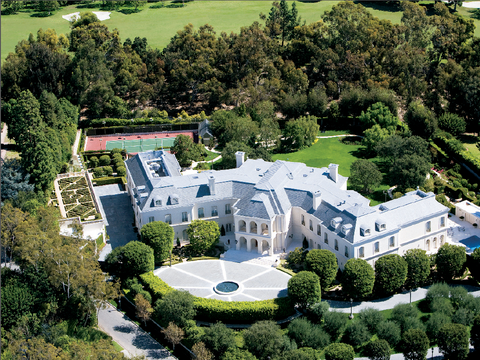South Mapleton Drive - The Manor

During the 1920s and 1930s, Art Deco was one of the most popular styles in Los Angeles. The Oviatt and Eastern Columbia buildings downtown, Bullocks Wilshire and I. Magnin on Wilshire Boulevard, and the Sunset Tower apartments on Sunset Strip adopted Art Deco’s sleek lines and decorative motifs, as well as the favored materials of aluminum and steel. The style appeared in many movies such as Grand Hotel (1932), where Greta Garbo, Joan Crawford, and John and Lionel Barrymore act out their roles in a sumptuous and sleekly Art Deco luxury hotel in Europe. Of course, it was actually a set at MGM in Culver City.
Why was Art Deco not popular for single-family residences in Los Angeles? In its pure form, Art Deco was too daring, really too chic for many families, who favored the neo-Georgian and Colonial styles popular in the 1920s and 1930s. Art Deco, however, did have a significant impact on some residences through its simpler offshoot, the Moderne style, which became very popular in Los Angeles during the 1930s, and which was more appropriate to the region’s light and climate than the French-inspired Art Deco. A few Moderne touches on a simple dwelling or retail building denoted up-to-date taste, yet was not excessively showy during the Depression. In the hands of architects Paul R. Williams or James E. Dolena, and on a residence with a large budget, the neo-Georgian and Moderne influences were often combined into the fashionable Hollywood Regency style.
Of the few large Art Deco homes constructed in Los Angeles, the finest example is this Holmby Hills residence. Completed in 1928, this mansion was large enough in size—and in budget—to display Art Deco in all its glory.





